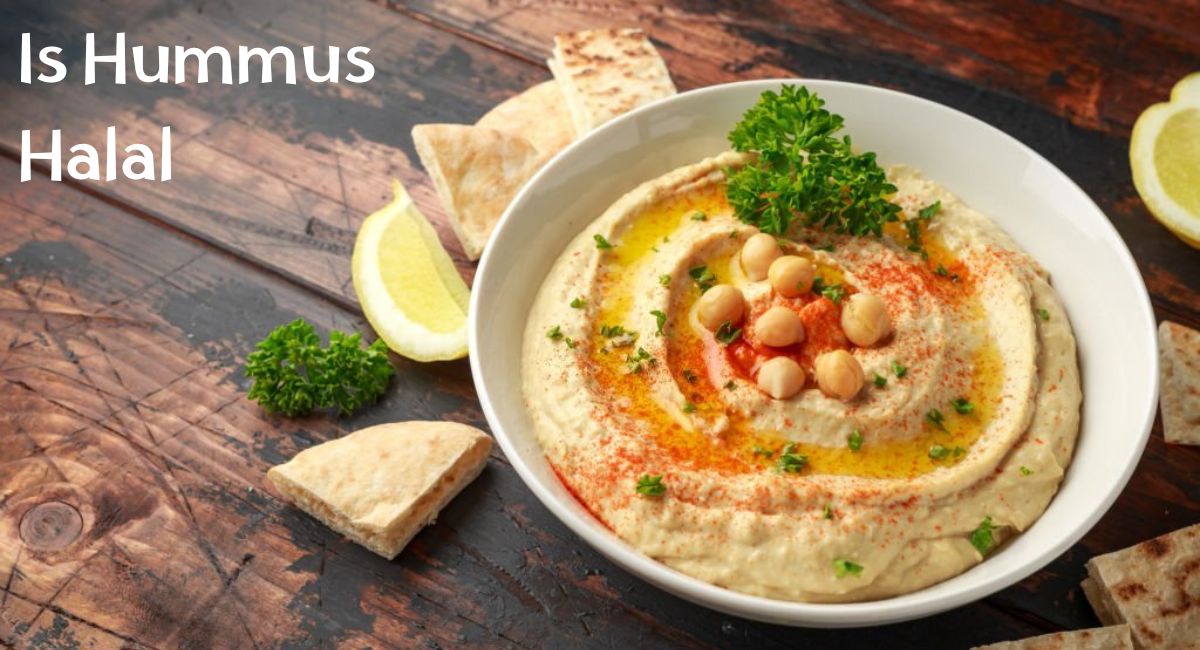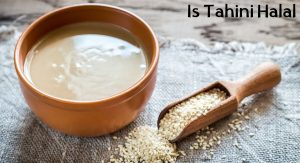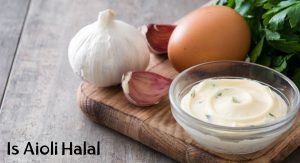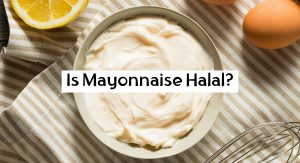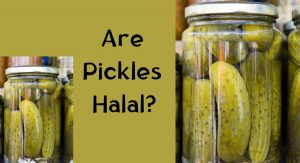Hummus, a creamy and flavorful Middle Eastern dip made from mashed chickpeas, tahini, lemon juice, and various seasonings, is a popular and versatile dish enjoyed by people around the world.
When it comes to its halal status, hummus is generally considered halal, making it permissible for consumption by Muslims.
However, as with many food items, there are some considerations and potential variations in ingredients that individuals may need to be aware of to ensure it aligns with Islamic dietary guidelines.
In this article, we will explore the factors that determine the halal status of hummus and provide insights into how to make or purchase it in a way that complies with Islamic dietary laws.
Is Hummus Halal
Hummus is generally considered halal, which means it is permissible for Muslims to consume according to Islamic dietary laws. The primary ingredients in hummus are chickpeas, tahini (sesame paste), olive oil, lemon juice, and various spices. None of these ingredients are inherently non-halal.
However, it’s essential to be cautious when purchasing commercial or pre-packaged hummus, as some products may contain additives, preservatives, or flavorings that could be derived from non-halal sources. Additionally, cross-contamination with non-halal ingredients can occur during the manufacturing process, so some Muslims prefer to make their hummus at home to ensure its halal status.
As with any food item, if you have specific concerns about the halal status of hummus, it’s best to check the product’s ingredients or inquire with the manufacturer. Islamic dietary laws can vary among different scholars and regions, so personal preferences and interpretations may also play a role in determining whether a particular hummus product is considered halal by an individual or community.
Halal Hummus Recipe
Making halal hummus at home is relatively easy, and it allows you to have complete control over the ingredients to ensure it adheres to your dietary preferences. Here’s a simple halal hummus recipe for you:
Ingredients:
- 1 15-ounce can of chickpeas (also known as garbanzo beans), drained and rinsed
- 1/4 cup tahini (sesame paste)
- 2-3 tablespoons fresh lemon juice (adjust to taste)
- 2 cloves garlic, minced
- 2 tablespoons extra virgin olive oil (plus more for drizzling)
- 1/2 teaspoon ground cumin
- Salt to taste
- Water (as needed to achieve desired consistency)
- Optional toppings: paprika, chopped fresh parsley, additional olive oil, or whole chickpeas for garnish
Instructions:
- Start by rinsing and draining the canned chickpeas to remove any excess salt or brine.
- In a food processor, combine the chickpeas, tahini, minced garlic, fresh lemon juice, ground cumin, and salt. You can start with a small amount of salt and adjust to your taste later.
- Turn on the food processor and blend the ingredients until they are well combined. If the mixture appears too thick or dry, you can add a tablespoon of water at a time until you reach your desired creamy consistency.
- Taste the hummus and adjust the seasoning as needed. You can add more lemon juice, salt, or cumin if desired.
- With the food processor running, drizzle in the 2 tablespoons of extra virgin olive oil, which will help make the hummus smooth and creamy.
- Continue blending until the hummus is silky and has no large chunks. You may need to scrape down the sides of the food processor bowl and blend again to ensure everything is well mixed.
- Once the hummus reaches your desired consistency and taste, transfer it to a serving bowl.
- To serve, you can drizzle a bit of olive oil on top and sprinkle with paprika, chopped fresh parsley, or garnish with whole chickpeas.
- Serve the halal hummus with pita bread, fresh vegetables, or as a dip for your favorite snacks.
Enjoy your homemade halal hummus! You can also customize it by adding roasted red peppers, sun-dried tomatoes, or other ingredients to create different variations.
What is Hummus
Hummus is a popular Middle Eastern dip or spread made primarily from cooked and mashed chickpeas, blended with tahini (a paste made from sesame seeds), lemon juice, garlic, and various seasonings. Its creamy texture and savory flavor make it a versatile condiment that’s enjoyed worldwide.
The history of hummus dates back thousands of years, with its origins rooted in the Middle East, specifically in ancient Egypt and Mesopotamia. Chickpeas, a key ingredient in hummus, were one of the earliest cultivated crops in the region. Initially, chickpeas were consumed whole, but over time, people began mashing them into a paste.
The word “hummus” itself is derived from the Arabic word for chickpeas. While the basic ingredients of hummus have remained relatively consistent over the centuries, various regional adaptations and flavorings have emerged, resulting in a diverse array of hummus variations. It gained widespread popularity in the Middle East and Mediterranean region and gradually made its way into international cuisine.
In recent years, hummus has gained immense popularity as a healthy and protein-rich snack in many parts of the world, and its versatility has led to creative interpretations and flavor combinations. Today, hummus is not only enjoyed as a dip with pita bread or vegetable sticks but also as a spread on sandwiches and wraps, showcasing its enduring appeal and adaptability in global culinary traditions.
Hummus Flavours
Hummus comes in a variety of flavors and variations, catering to diverse tastes and culinary preferences. Some popular hummus flavors include:
- Classic Hummus: The traditional and most common flavor, made with chickpeas, tahini, lemon juice, garlic, and olive oil. It has a mild, nutty, and slightly tangy taste.
- Roasted Red Pepper Hummus: Prepared by adding roasted red bell peppers to the classic hummus, giving it a sweet, smoky, and slightly spicy flavor.
- Roasted Garlic Hummus: Roasted garlic cloves are blended into the hummus, imparting a rich, earthy, and mellow garlic flavor.
- Sun-Dried Tomato Hummus: Sun-dried tomatoes, often rehydrated, are incorporated into the hummus to create a sweet, tangy, and robust tomato taste.
- Spinach and Artichoke Hummus: Inspired by the popular dip, this hummus combines chopped spinach, artichoke hearts, and various seasonings for a creamy and savory flavor.
- Olive Hummus: Whole or chopped olives are added to the hummus, lending a briny, salty, and slightly tangy quality.
- Pesto Hummus: This variation combines traditional hummus with basil pesto, resulting in a fusion of Mediterranean and Italian flavors, with the herbal notes of basil and the richness of pine nuts.
- Spicy Hummus: Chili peppers or hot sauces are incorporated to add heat and a spicy kick to the hummus.
- Curry Hummus: Curry spices, such as cumin, coriander, and turmeric, are blended into the hummus for a warm, aromatic, and slightly spicy profile.
- Avocado Hummus: Mashed avocado is mixed with traditional hummus, creating a creamy and buttery texture with a hint of avocado’s mild flavor.
- Beet Hummus: Beets are roasted and pureed into the hummus, giving it a vibrant pink color and a slightly sweet, earthy taste.
- Chocolate Hummus: A sweet twist on hummus, made by adding cocoa powder, sugar, and sometimes even chocolate chips for a dessert-like treat.
These are just a few examples of the many hummus flavors available, and creative variations continue to emerge as hummus gains popularity worldwide. Whether you prefer a classic taste or enjoy experimenting with bold and unique flavors, there’s likely a hummus variety to suit your palate.
What Does Hummus Taste Like
Hummus has a distinct and appealing taste characterized by a combination of flavors. Here’s a breakdown of what hummus tastes like:
- Nutty: Hummus has a nutty undertone, primarily due to the presence of tahini, which is made from sesame seeds. This nuttiness provides a rich and earthy flavor to the dip.
- Creamy: The texture of hummus is creamy and smooth, making it easy to spread or dip. This creaminess contributes to its pleasant mouthfeel.
- Tangy: Hummus has a slightly tangy and citrusy taste, thanks to the addition of lemon juice. This tanginess adds a refreshing and bright element to the overall flavor.
- Garlicky: Garlic is a key ingredient in traditional hummus recipes, and its pungent, aromatic quality gives hummus a mild garlic flavor. Roasted garlic varieties may have a mellower garlic taste.
- Savory: Hummus is inherently savory, making it a versatile base for various flavorings and seasonings. Its savory profile pairs well with a wide range of ingredients.
- Mildly Salty: Hummus typically contains some salt to enhance its overall flavor. The saltiness is generally subtle but contributes to the well-balanced taste.
- Mildly Bitter: In some cases, tahini can introduce a mild bitterness, which is usually not overpowering and complements the other flavors.
The combination of these elements creates a harmonious and well-rounded flavor profile. Hummus is often described as savory, nutty, and slightly tangy, making it an ideal dip, spread, or accompaniment for various dishes. While classic hummus has these core characteristics, the addition of ingredients like roasted red peppers, olives, or spices can introduce additional flavors and nuances to suit different preferences.
How to Use Hummus
Hummus is a versatile and delicious condiment that can be used in various ways. Here are some popular ways to enjoy hummus:
- Dip for Vegetables: Hummus makes an excellent dip for fresh vegetables like carrot sticks, cucumber slices, bell pepper strips, celery, and cherry tomatoes. It adds creaminess and flavor to your veggie snacks.
- Pita Bread or Chips: Spread hummus on pita bread or use it as a dip for pita chips or crisps. It’s a classic and satisfying combination.
- Sandwich or Wrap Spread: Use hummus as a spread in sandwiches, wraps, or pita pockets. It adds a creamy, savory element to your lunch or dinner. It pairs well with grilled vegetables, roasted chicken, turkey, or falafel.
- Bread or Cracker Topping: Spread hummus on toast, bagels, or crackers for a quick and tasty snack or appetizer. You can also sprinkle some herbs, chopped olives, or a drizzle of olive oil on top for extra flavor.
- Salad Dressing: Thin out hummus with a bit of water or lemon juice to create a creamy salad dressing. It works particularly well with Mediterranean or Middle Eastern-inspired salads.
- Bowl Base: Use hummus as a base for grain bowls or Buddha bowls. Layer cooked grains (like quinoa or rice), roasted or grilled vegetables, protein (chicken, tofu, etc.), and a drizzle of dressing on top of a generous dollop of hummus.
- Pizza Topping: Instead of traditional pizza sauce, spread a layer of hummus on pizza dough and top it with your favorite ingredients like roasted vegetables, olives, feta cheese, and herbs.
- Stuffed Peppers or Tomatoes: Mix hummus with cooked quinoa, herbs, and chopped vegetables, and use this mixture to stuff bell peppers or tomatoes. Bake until tender for a flavorful side dish.
- Pasta Sauce: Blend hummus with a bit of olive oil, lemon juice, and pasta cooking water to create a creamy pasta sauce. Toss it with cooked pasta and your choice of vegetables or protein.
- Marinade or Grilling Sauce: Hummus can be used as a marinade or grilling sauce for chicken, fish, or vegetables. The creamy texture helps keep the grilled items moist and adds flavor.
- Soup Garnish: Add a dollop of hummus to soups like lentil or vegetable soup just before serving for an extra layer of creaminess and flavor.
- Hummus Desserts: Some creative chefs have even used hummus in dessert recipes, like hummus-based brownies or cookies. These desserts often highlight the natural sweetness and creaminess of hummus.
Feel free to experiment with different hummus flavors and ingredients to create unique dishes and flavor combinations. Hummus is a versatile ingredient that can enhance the taste and texture of a wide range of recipes.
Is Hummus Good for You
Yes, hummus is generally considered a nutritious food that offers several health benefits when consumed as part of a balanced diet. Here are some reasons why hummus is considered good for you:
- Rich in Nutrients: Hummus is a good source of essential nutrients, including protein, fiber, healthy fats, vitamins, and minerals. It contains vitamins like B6 and C, folate, iron, magnesium, and potassium.
- Protein: Chickpeas, the primary ingredient in hummus, are a plant-based source of protein. Protein is important for muscle maintenance, repair, and overall bodily functions.
- Healthy Fats: Tahini, another key component of hummus, provides healthy fats, primarily in the form of monounsaturated and polyunsaturated fats. These fats are heart-healthy and help regulate cholesterol levels.
- Fiber: Hummus is a good source of dietary fiber, which aids digestion, promotes a feeling of fullness, and helps regulate blood sugar levels.
- Antioxidants: Some of the ingredients in hummus, like chickpeas and olive oil, contain antioxidants that help protect cells from damage caused by free radicals. This can potentially reduce the risk of chronic diseases.
- Heart Health: The combination of healthy fats, fiber, and antioxidants in hummus may contribute to heart health by reducing the risk of heart disease and improving cholesterol profiles.
- Weight Management: The fiber and protein content in hummus can help control appetite and promote a feeling of fullness, which may aid in weight management and healthy eating habits.
- Blood Sugar Control: The fiber and protein in hummus can help stabilize blood sugar levels, making it a suitable option for people with diabetes.
- Bone Health: Hummus contains calcium, magnesium, and phosphorus, which are essential for maintaining strong and healthy bones.
- Digestive Health: The fiber in hummus supports a healthy digestive system by preventing constipation and promoting the growth of beneficial gut bacteria.
However, it’s essential to consume hummus in moderation, as it is calorie-dense due to its healthy fat content. Additionally, store-bought hummus may contain added salt and preservatives, so it’s a good idea to check the label and opt for varieties with lower sodium content or make your own at home.
Also Read
Is Mayonnaise Halal In Islam: Discover the halal status of mayonnaise in this informative article. Unveil the ingredients and production process to determine whether this popular condiment aligns with your dietary preferences.
Is Ranch Dressing Halal In Islam: Dive into the world of ranch dressing and explore its halal suitability. Uncover the ingredients and preparation methods to make an informed choice about including this creamy dressing in your meals.
Is Tartar Sauce Halal In Islam: Delve into the question of whether tartar sauce meets halal requirements. Learn about the components and origins of this tangy condiment to decide if it aligns with your halal dietary guidelines.
Is Aioli Halal In Islam: Uncover the truth about aioli and its halal status. Discover the ingredients and preparation process of this flavorful sauce to determine if it’s a permissible choice within your dietary restrictions.
Is Tahini Halal In Islam: Explore the world of tahini and its compatibility with halal guidelines. Examine the ingredients and production methods of this versatile sesame paste to decide if it’s suitable for your dietary needs.
Frequently Asked Questions
1. Is hummus vegan?
Yes, hummus is inherently vegan. It is made primarily from plant-based ingredients, including chickpeas, tahini (sesame seed paste), lemon juice, garlic, and various seasonings. There are no animal products used in traditional hummus recipes, making it a popular and suitable choice for individuals following a vegan or vegetarian diet. However, it’s always a good practice to check the ingredient label, especially in store-bought varieties, to ensure that no non-vegan ingredients have been added.
2. Is hummus gluten-free?
Hummus is typically gluten-free when made with traditional ingredients. Chickpeas, which are the primary component of hummus, are naturally gluten-free, as are tahini (sesame seed paste), lemon juice, and garlic.
However, it’s essential to exercise caution when purchasing store-bought hummus or when making hummus from packaged ingredients. Some commercial hummus products may include additives, flavorings, or stabilizers that contain gluten.
3. Can I make hummus at home?
Absolutely! Hummus is relatively easy to prepare at home with a food processor. Making your own hummus allows you to customize the flavors and ingredients to suit your taste preferences. It’s a rewarding and cost-effective way to enjoy this delicious dish.
